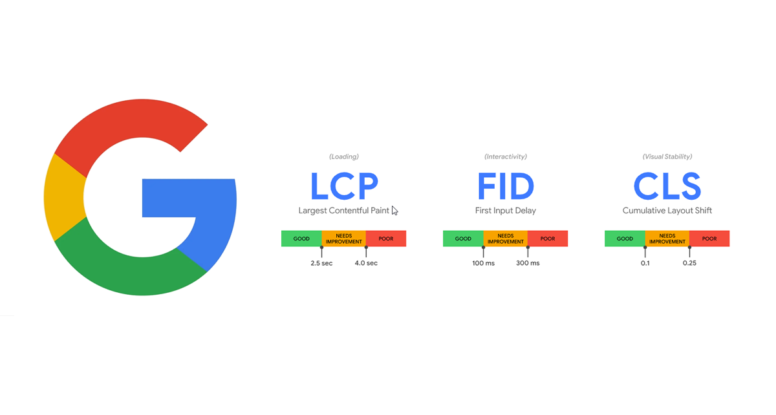
Google Announces Core Web Vitals. Start Planning.
Coming sometime in 2021, Google will be changing the way site speed affects search rankings. The new ranking signal will be lovingly titled the “page experience signal” and will be combined with Core Web Vitals per an announcement from Google. Google suggests you’ll be given notice six-months before rolling out the changes, so you don’t have to respond immediately. But it would be wise to start preparing now.
This looks like a positive change. And since this algorithm change is about a year away, and users have a tool to help optimize for it, you have time to take advantage of this site speed reporting change. Specifically, the new rankings deal with user experience are part of the Core Web Vitals introduced in May 2020. The signals will measure:
• Loading (Largest Contentful Paint): This is the time it takes for a page to load. An ideal measurement is 2.5 seconds or faster.
• Interactivity (First Input Delay): This covers how long it takes for a page to become interactive. An ideal measurement is less than 100 milliseconds.
• Visual stability (Cumulative Layout Shift): This covers the amount of unexpected layout shift of visual content. An ideal measurement here is less than 0.1.
While these changes will benefit organic search, it’s useful for all channels as they will clearly impact the user experience. For example, if you can get your load time under 2.5 seconds for every page in the user’s journey, conversion rate should increase and cost per conversion will likely decrease, too.
The metrics are based on the Chrome User Experience project, a monitoring function in the Chrome browser that sends data about page load speeds to Google. The company says its goal is to help website builders and owners create pages that users find useful and enjoyable.
Be aware that site speed is not replacing content as a primary ranking metric, it’s supporting it. As Google explains it, page experience will be especially important when there are multiple pages with similar content. In those cases, the pages with the best site speed and overall experience will earn a higher ranking. That means quality content plus optimized site speed equals better rankings for your site.
What should you do now?
Panic! Just kidding, don’t do that. Simply start getting ready. We recommend getting a complete understanding of where you sit now. Use one of the many evaluation tools to identify your LCP, FID, CLS metrics for each key template page on your site. For example, VereNorth will evaluate our unique pages such as our homepage, category pages, blog home, blog post template, and contact forms. Once we know how each key unique page measures up, we can then begin prioritizing what we need to fix.
Prioritize by knocking off common issues across each page, and then begin tuning the priority pages and easier wins. If you find you have a large-ish issue that is outside of your control, such as a slow hosting provider, you can start shopping for a new provider. It comes down to prioritizing what you can control and the impact. Start now and you have plenty of time.
If you have questions about Core Web Vitals, or about site performance in general, contact the Verenorth team today.

